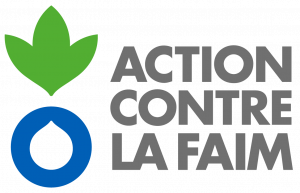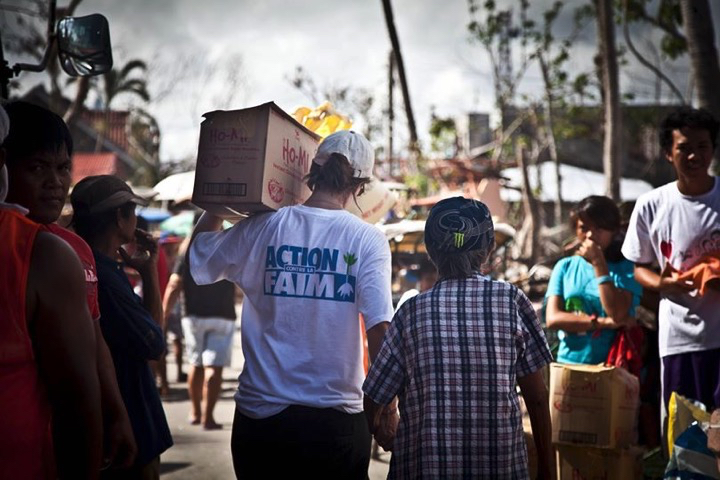How IT monitoring helps NGOs face human, financial and logistical challenges, maximizing availability of crucial infrastructure and software on humanitarian missions.

The digital revolution is bringing Non-Governmental Organizations (NGOs) new IT challenges to contend with. Julien Brun, Field Infrastructure Deployment Coordinator at the French headquarters of Action Contre la Faim (ACF, Action Against Hunger) strives to ensure the resilience of the IT system, in support of field-critical assets. Julien agreed to share with us on the issues he faces on a daily basis and explaining how the introduction of a new IT monitoring platform will help the NGO rise up to those challenges. Centreon EMS is being deployed on all the field missions managed by ACF France headquarters in 24 countries. By the end of 2019, the solution will enable Julien’s team to seamlessly manage the infrastructure and help guarantee optimal service to the organizations’ 5000 employees who have the daily mission of fighting hunger in struggling communities.
Centreon: Can you start by telling us a little about Action Against Hunger?
Julien Brun: Action Against Hunger is a humanitarian organization created in 1979 at the initiative of a group of thinkers and scientists, among them Alfred Kastler, Jean-Christophe Victor, Francoise Giroud, and Marek Halter. For the past 40 years, it has pursued its mission, to save lives, eradicating hunger through the prevention, detection, and treatment of malnutrition, particularly during and after emergency situations caused by conflicts and natural disasters. Their mission is organized around 5 pillars: nutrition, food security, access to water, psychological support for vulnerable populations, as well as public and politic awareness on these topics. The association currently operates in more than 50 countries and is managed from four operational headquarters located in France, Spain, India, and the United States.
Centreon: What role does your team play within the NGO?
Julien Brun: Each national headquarters have autonomy over their operations and field mission management. My team is part of the French headquarters, which is the largest, operating in 24 countries and overseeing missions that mobilize between 4,000 and 5,000 employees: 300 at the headquarters, 300 expatriates, and national employees constituting the bulk of the field teams. IT management is centralized at the various headquarters—although we do manage some of the infield IT for the US headquarter. The IT department has always been a part of logistics, the centerpiece of our action deployment plans. IT personnel comprises about 40 people at headquarters and 30 in the field, divided into two distinct teams: Support and development and Projects and infrastructure management. We’re typically managing a wide variety of configurations, ranging from a simple base office with a few people to main city offices accommodating up to 200 people.
Centreon: What are the major IT issues facing NGOs, from your experience at Action Against Hunger?
Julien Brun: I would say that the first is the heterogeneity of our sites and of our user base. Although we have tried to standardize hardware and software configurations (routed from France, most of the time), we need to adapt to the level of development of local infrastructure (electricity, Internet, telecom, etc.), which can become very restrictive. When electricity or the Internet is up only a few hours during the day, things are bound to become more complicated… Another major challenge is adapting to the skill level of local users, with most having little IT experience. As for all NGOs the sheer distance between work teams is a problem. Finally, cost optimization is a constant challenge.
“The real challenge is to constantly adapt to the fluctuating availability of human, material, logistical and financial resources. We’re dealing with a complex array of sites, users, and contexts, and the perpetual need to be cost-effective.”
Centreon: Did the digital transformation change the way you manage IT for your teams?
Julien Brun: IT has become strategic for us, as it is in any organization, private or public. For the longest time, field teams were working with spreadsheets, but now we’ve adopted more robust business solutions. We need to consider not only the cost of digital transformation itself, evolving hardware and software, but equally the steep cost of Internet access in some countries. We can rarely afford installing local servers in our field offices, due to local conditions. In that context, Internet availability is critical for field teams working in real time from servers based in France.
“Everyone wants to benefit from the new possibilities offered by the digital transformation, understandably. But these benefits come at a price because our work environment presents many constraints.”
Centreon: How do you leverage the Centreon EMS IT monitoring project in this context?
Julien Brun: Our field and headquarters teams mainly use office tools (including the proverbial spreadsheet!), Skype, email messaging and some web-based business applications for optimized management. Before we adopted our Centreon solution, only a small part of these tools and underlying infrastructure were being monitored by our previous solution. When the supplier of that solution closed shop, we were forced to review our IT monitoring system. This proved to be a blessing, allowing us to completely rehaul IT monitoring practices, change the firewall, and rebuild our network.
Centreon: Why did you pick a solution like Centreon EMS?
Julien Brun: We were looking for an IT monitoring solution that could address our constraints, which are very specific, as you saw. First of all, the solution needed to be able to work around Internet cuts through running on a BeagleBone installed in each office. These are small cards acting like mini servers. They enable the monitoring of the network as long as it stays connected to a power supply, sending data to headquarters as soon as the Internet connection is restored.
Secondly, since we manage a multitude of remote sites with few local IT resources, we wanted a solution that was fast to deploy and that was really simple to use, more specifically one that did not require novice users having to type in command lines.
Other important criteria for us was the track record of the software developer and access to an important open source community, to ensure the long-term relevance of the solution that would be implemented.
“In short, we chose Centreon EMS because the solution met four important criteria: the ability to remotely monitor via BeagleBones, ease of deployment, fast adoption, and access to a critical open source community.”
Centreon: How is your monitoring project going?
Julien Brun: The project began in June 2018. For a week, we benefited from the support of the Centreon team to complete the migration, set up a pilot simulating a remote office, and prepare and automate the deployment process. The guiding principle for the project was to enhance autonomy of the local field teams by granting them access to the centralized servers in France, so they can get some visibility into the IT monitoring of their equipment and share some prioritized alerts.
Production at headquarters is ongoing for pilot projects in four countries. As a start, we’re limiting access to the monitoring platform to IT teams. But by the end of 2019, all of our remote sites will be deployed, as we’re simultaneously updating the network, and we’ll be able to monitor all distant site through the shared Centreon platform. This regroups 300 people working from headquarters, about 2000 field personnel, and some 60 direct users of the Centreon solution, all are IT department staff.
“Ultimately, the Centreon solution will also integrate missions managed from the American headquarters, adding 10 countries and granting direct access and reporting to an extended group of top management and field teams.”
Centreon: How is Centreon EMS helping you meet your unique challenges? What benefits are expected from the adoption of the new IT monitoring system?
Julien Brun: Deploying a local monitoring tool would be impractical, but there’s a real need for a centralized and global vision to facilitate field work. Our new IT monitoring platform can now fill that void. “Centreon EMS will help us diagnose incidents faster, which is never easy when local users are not IT specialists and are based on the other side of the globe. We will gain in responsiveness and curtail productivity losses for local teams.”
Also, IT monitoring will facilitate compliance management. Employing common tools and procedures throughout our sites streamlines technical support, strengthen security, and promotes mutual assistance between missions. For all these reasons, we have defined a core model that we’ve deployed across our field missions, allowing for some local flexibility. Through applying this standardized approach, IT monitoring becomes an excellent tool to manage the conformity of our sites.
Last but not least, our IT monitoring platform will provide for the tracking and reporting of some significant IT system performance indicators, which can be understood by all stakeholders. Our organization is funded by public funds at 60% and by individual donations at 40%—it’s extremely important for us, the IT department, as for the organization as a whole, to be accountable and transparent on how these funds were put to good use. With such Centreon tools as MBI, BAM and MAP, we’re enabled to publish graphical indicators that are very visual and easy to comprehend for novice IT users and non-IT specialists alike.
“In short, our new Centreon EMS IT monitoring system will assist in our daily incident diagnostics, in tracking and ensuring compliance, and reporting on the ROI of our IT efforts through the production of appropriate indicators for our organization’s IT and senior management.”
To learn more about Action Against Hunger: https://www.actioncontrelafaim.org/en/
To make a donation: https://donner.actioncontrelafaim.org/faire-un-don/~mon-don






